The Diplomat (Japan): Su-27SK vs SAAB JAS-39C Gripen. Parsing Open Data
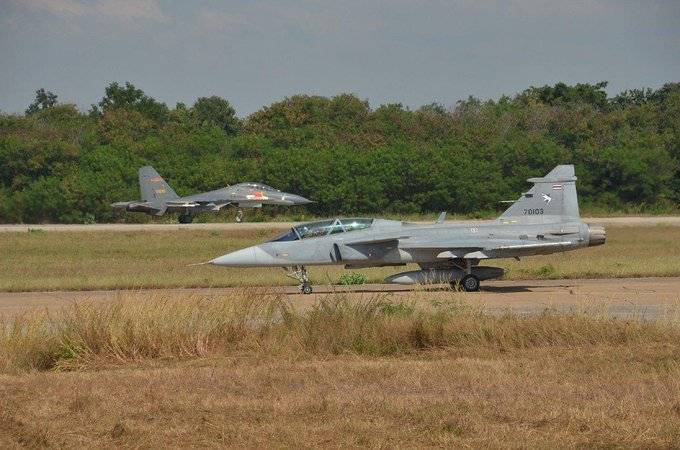
We offer you a translation Articles Rick Joe, Flankers [1] vs. Gripen: what happened during the Eagle Strike 2015 exercise, released April 16, 2020 in The Diplomat, Japan. The article is devoted to the analysis of training air battles between the Su-27SK of the Chinese Air Force against the SAAB J-39C Grippen fighters of the Royal Thai Air Force. Briefly, these exercises and the results of the Su-27SK battles against fighters of Swedish manufacture have already been reported in the domestic press. On "Military Review" - twice: time и two. However, Joe's article abounds with a number of details unknown to the domestic reader.
All text below is an article by Rick Jow.
Over the past few months the military and aviation The media reported on the lecture of the test pilot of the Air Force of the People's Liberation Army of China (PLA Air Force) Li Zhonghua, read in December 2019 at the Northwestern Polytechnic University in Shaanxi[2]. The lecture provided an unusually detailed look at the experience gained by the PLA Air Force during the Eagle Strike 2015 exercises held in Thailand with the participation of the Royal Thai Air Force, which competed with the PLA Air Force. The PLA Air Force sent their Su-27SKs to the exercises, while the Royal Thai Air Force sent SAAB JAS93C Gripen (Gripen-C).
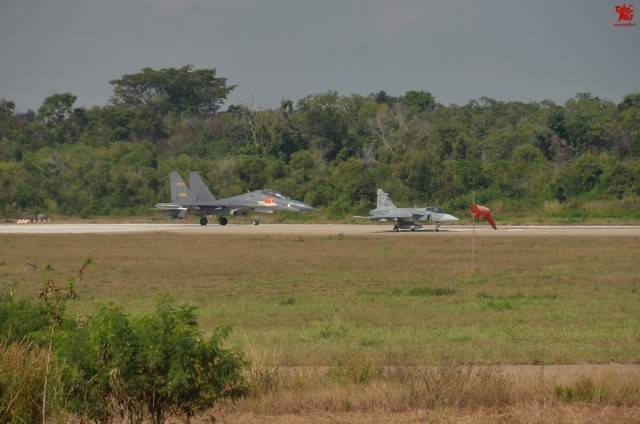
Some comments regarding the disclosed results of past exercises included extrapolating the results to the capabilities of other aircraft of the Su-27 family or Chinese J-11[3] or conclusions were drawn about the capabilities and training of the PLA Air Force pilots.
The proposed article describes the capabilities of the aircraft participating in the exercises and offers a look at the results of these exercises with these capabilities in mind.
Su-27SK and Gripen-C
It is difficult to evaluate the results of the exercises, without access to a detailed comparison of the aircraft involved, as well as the tasks and conditions of the battles. Unfortunately, it is rather difficult to establish the features of the tasks and individual exercises performed during these exercises, and while the lecture by Li gives information that various tasks were solved, there is no exact information about these tasks.
Nevertheless, the lecture made a comparatively detailed comparison of the Gripen-S in the confrontation with the Su-27SK, from which it follows.
Comparison of aircraft in battle at medium (outside visual visibility) distances (The first parameters are JAS39C-second parameters Su-27SK. - Approx. translator)[4]:
Missiles for the specified distance: AIM-120 with a range of 80 km - RVV AE with a range of 50 km.
Radar: Detection range of 160 km, tracking 10 targets - 120 km and 10 targets.
Aircraft EPR: 1,5-2 meters for Gripen - 10-12 meters for Su-27SK.
The number of simultaneously fired targets: 4 for Gripen - 1 for Su-27SK.
EW stations: one built-in and up to two container - one container.
Towed false target: “Gripen” has it, Su-27SK hasn’t.
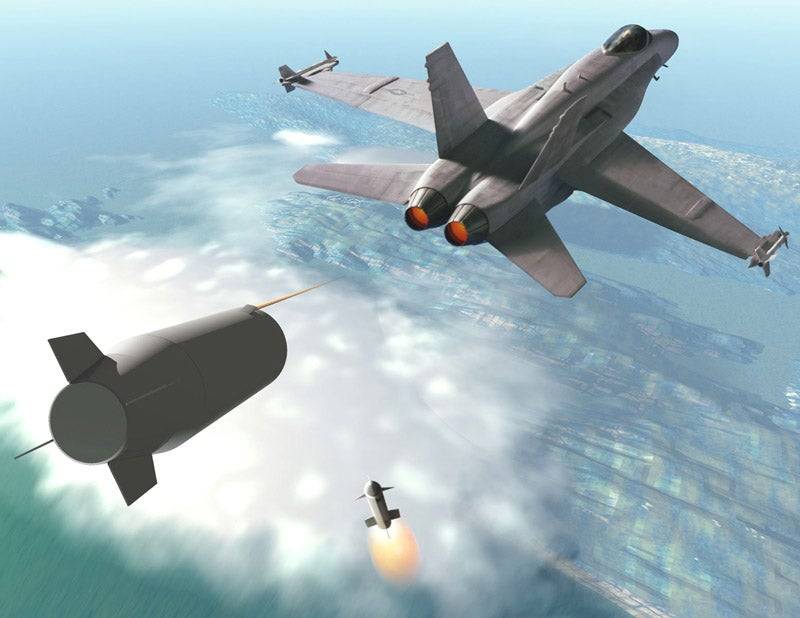
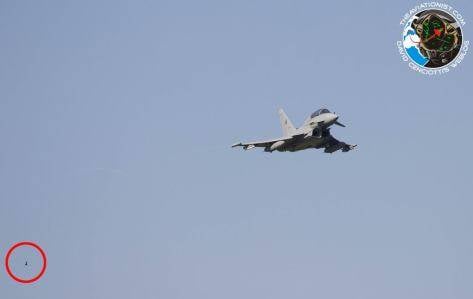
Passive false targets: IR traps and dipole reflectors in both aircraft.
The functions of warning systems: “Gripen” - on radar exposure (STR), on the launch of missiles by the enemy, on the approach of a rocket; Su-27SK - STR and warning about the approach of a rocket.
Automated information exchange channels: 2 for Gripen - 1 for Su-27SK.
Night vision system for the pilot: the Gripen has it, the Su-27SK doesn't.
Comparison of aircraft in battle at close range (within visual range). Instead of numerical values, some parameters are characterized by the words "satisfactory", "good", "excellent" [5].
Maximum overload: Gripen + 9 / -2g - Su-27SK + 8 / -2g[6].
Thrust of the engine (s): “good” - “excellent”.
Perfection avionics: “excellent” - “satisfactory”.
The rate of steady reversal: “good” - “excellent”.
Unsteady U-turn speed: “excellent” - “satisfactory”.
Short-range missiles: AIM-9L - "good", P-73 - "excellent"[7]
Helmet system of target designation and indication: “excellent” - “good”.
Principal factors:
Combat radius: 900 km - 1500 km.
The possibility of refueling in the air: “Gripena” has it, not the Su-27SK.
Combat load: 6 tons - 4 tons.
Tasks performed: air combat, strikes against ground targets, air reconnaissance - air combat only[8].
With all this information, you can begin to analyze the advantages and disadvantages of both aircraft.
“Gripen-S” has superiority in combat at large distances outside the visual range due to the detection range of its radar targets (160 km versus 120 for the Su-27SK), the maximum launch range of its missiles (80 km against 50 km) and the ability to simultaneously attack four goals, against one target in the Su-27SK.
In general, avionics Gripena with all its capabilities significantly exceeds that of the Su-27SK. He also has superiority in the speed of an unsteady U-turn. The Su-27SK, in turn, has superior traction, steady-state turning speeds, and superior R-73 missiles, whose potential can be realized by the Slit-3M primitive but effective helmet-mounted target designation system.
Accordingly, the advantages and disadvantages of aircraft can be described as follows:
- in general, Gripen significantly surpasses the Su-27SK in long-range combat, electronic warfare systems, communications, pilot situational awareness, and radio channels for automated information exchange; it has more advanced avionics and cockpit equipment;
- airplanes are superior to each other in "their" battle ranges;
- The Su-27SK has superiority in engine thrust, maneuverability, and has more effective missiles for close combat R-73, the superiority of which is realized when using the helmet-mounted aiming system.
The value of weapons and avionics
Before you review the results of Eagle Strike 2015, it may be useful to study the age and capabilities of the Su-27SK in the Chinese service. The Su-27SK, also assembled in China as the J-11A, was the first fourth-generation fighter in the PLA air force imported from Russia in the early 90s.
However, over the decades of service that have passed since then, the Su-27SK has been upgraded to the very minimum extent, for example, having been able to use the RVV-AE missiles, which they did not have in their original form, a warning system about the approach of enemy missiles and some minor updates to cockpit devices.
All other systems - radar, avionics in general, electronic warfare systems, information exchange systems and weapon, significantly lagging behind other modern fourth-generation fighters, not to mention the 4+ generation.
The “fourth generation” of fighters can be classified as several subgenerations, reflecting the level of capabilities of their avionics, weapons, sensors and communication systems. The list below shows a small number of some examples:
- “early fourth generation” - can be cited as an example F-14A, F-15A, Su-27SK / J-11A;
- “the modern fourth generation” - for example, F-15C, J-11B, J-10A and “Gripen-S” (JAS39C which is in service with the Royal Thai Air Force. - Approx. Translator);
- 4+ generation, for example F-15EX, F-16V, J-16, J-10C and Gripen-E.
J-11A / Su-27SK, therefore, belong to the "early fourth generation" due to the failure of modernization, and this aircraft can easily be defined as the oldest and least efficient 4th generation fighter in the PLA Air Force; it is likely that even a modernized 3rd-generation fighter, such as the J-8DF (equipped with a modern fourth-generation radar and long-range effective PL-12 missiles), can easily defeat the Su-27SK in battle equally for both aircraft conditions.
Results Overview
Anyone could have predicted that, being a modern 4th-generation fighter, the Gripen would have a significantly superior combat score compared to the Su-27SK at long distances, outside the range of visual detection, as well as in any group battles that require better coordination and situational awareness. These results could easily be foreseen, based on the overwhelming superiority of Gripen in enemy detection systems, long-range weapons, small EPR, electronic warfare systems and avionics in general. The level of pilot training would have minimal effect to bridge such a huge technology gap.
One could expect superiority in the melee from the Su-27SK, where it could rely on the superiority of its R-73 missiles and superiority in maneuverability and LTX, and where the enemy could not realize technological superiority as clearly as at long distances. Technological superiority means much less in such battles, which makes training pilots far more important to offset the imbalance in technology.
The results of the Eagle Strike 2015 exercises are fully consistent with the described logic, although the Su-27SK showed such superiority in victories in maneuver combat that no one could have expected[9]. This success can be attributed to both R-73 missiles and pilot training in training battles with aircraft of the J-10 family, from the PLA Air Force.
What are the conclusions?
The results of the “Eagle Strike 2015” - a serious confirmation that the aircraft with the best avionics, radar and other sensors, communications, electronic warfare and weapons can arrange a loud rout in long-range combat and group battles, requiring a high level of interaction in the group and situational awareness .
The superiority of Gripen in such battles is not unexpected, however, these results cannot characterize the Su-27 family as a whole as low-combat. In the end, the Su-27SK is one of the oldest aircraft of all the Su-27 variants in the world, having the smallest capabilities, and many of the subsequent Flanker variants received significantly improved weapons, radar and detection systems, communications, electronic warfare and avionics generally.
The PLA air forces are equipped with Su-30MKK / MK2 multipurpose fighters, the domestic J-11B / BS air conquest fighter. The latest J-16 fighter with AFAR and PL-15 missiles.
However, it would be wrong to say that the PLA Air Force did not learn any lessons from past exercises. An article written in Chinese according to insider information, as well as information from the original December slides, pointed to vulnerabilities such as insufficient situational awareness in group battles and the inability to withstand simulated long-range missiles, the last of which, by the known parameters used in the model, resembles AIM -120 AMRAAM.
Vulnerabilities in situational awareness can also be attributed to inferior [adversary] detection systems (including radar. - Approx. translator), instruments for displaying information in the cockpit and means of communication and information exchange of the Su-27SK plane, although some expectations follow from the Chinese presentation that Chinese pilots will be able to overcome this technical gap[10].
On the whole, the view adopted by the PLA Air Force on the past Eagle Strike 2015 exercises focuses on the qualities of the Chinese personnel participating in the training battles. This need not be considered unexpected, since the PLA Air Force does not often participate in international air exercises, which makes each such meeting a valuable training opportunity.
Also, do not forget that the PLA air forces were in the process of large-scale shifts in their combat training regimes, which began in the 2010s and the peak of discussion of which was just at the time when Eagle Strike 2015 took place.
The emphasis on linking the results of Eagle Strike 2015 and the training of Chinese pilots could be made specifically in order to intensify combat training and improve curricula and methods.
Foreign exercises of the PLA Air Force
Until 2010, the PLA Air Force almost did not conduct exercises with foreign military personnel on a noteworthy scale. In the 2010s, the exercises in which the PLA Air Force participated were the Shahin exercises in Pakistan, the regular exercises Eagle Strike and the participation in some Russian Aviadarts competition. There was also a one-time exercise with the Turkish Air Force Anatolian Eagles.
It is worth mentioning that the PLA Air Force sent the same Su-2010SKs to the Anatolian Eagles 27, which were opposed by the modernized F-4Es, and although the formal results of the exercises were not published, it is rumored that the Su-27SKs performed poorly. It is worth pointing out that the PLA Air Force used the same Su-27SK exercises that were later used in the Eagle Strike 2015 exercises, and since 2010 no more exercises have been conducted with the Turkish Air Force.
It makes sense to consider what rational reasons are behind the use of the Su-27SK in exercises with the Air Force, with which the PLA Air Force has never interacted before. Since the Su-27SK is the weakest fourth-generation fighter in the Chinese arsenal (both in 2010, and in 2015, and today), sending it to the exercises probably reflects the PLA’s reluctance to disclose sensitive information about more modern fighters. As can be seen from the later Eagle Strike exercises, the Chinese sent more efficient and modern J-10A and J-10C fighters, which may reflect an increase in mutual trust in the growing military relationship.
Of course, since the PLA Air Force conducts exercises with a couple of the Air Force in the world, it is difficult to make an unambiguous conclusion that these guesses are correct. But it is worth mentioning that in the Shahin exercises with Pakistan, taking into account the very long military and geopolitical relations, the PLA air force uses various new systems from 4+ generation fighters to AWACS aircraft, and usually without long-term delays from the moment of adoption .
A little bit about the future
The presentation of the Eagle Strike 2015 exercises provided very useful and rare details of the PLA Air Force's participation in the first exercises with the Royal Thai Air Force. And while the details of the presentation provide the basis for discussing the shortcomings of the pilots who participated in the exercises, some English-language interpretations of what happened contain a clear reassessment of the scale of the consequences. In particular, it is difficult to ignore the estimates of long-range battles and group battles, which mainly depend on the technological level of aircraft and to a minimum extent on the training of pilots.
In subsequent Eagle Strike exercises (2017, 2018, and 2019), the PLA air force used J-27A fighters more advanced than the Su-10SK and, finally, in 2019, the J-10C.
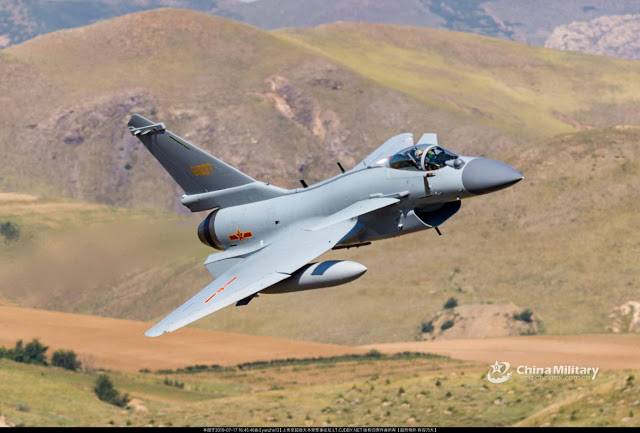
The rumors that accompany these teachings indicate that the Chinese have achieved much better results, in particular with the J-10C. Unfortunately, it is very unlikely that the PLA air forces will make public as much detailed analyzes of all subsequent exercises.
Rick Joe, The Diplomat (Japan), April 16, 2020
Translator's afterword
Fighter SAAB JAS 39 "Gripen" in version "C" today can be considered as a kind of "conditionally medium fighter of the West." In this regard, the results of the battles of the Su-27 against such a machine are of great interest to us. Although the Su-27 is now considered an obsolete aircraft and is not mass-produced, dozens of such aircraft still remain in the aerospace forces, and they are also in naval aviation.
More than half of them did not undergo significant modernization of avionics and in the battles with Western aircraft will show themselves in the same way as the Chinese fighters showed. And the latter lost 100% of fights at a great distance. The author of the article rightly pointed out that in such battles the training of pilots is of minimal importance, and the tactical and technical characteristics of the aircraft and its weapons are crucial.
Theoretically, there are several ways to solve the problem of obsolete aircraft. The first is a banal replacement with a new aircraft. This is the most reliable way, and this is what the Ministry of Defense has done in previous years, but still this process cannot be instantaneous. In addition, there are objective economic difficulties that our country is experiencing and which will not disappear so quickly.
The second way is modernization. But according to available information, the Ministry of Defense believes that bringing the Su-27 level to modern requirements is unreasonably expensive.
It is of interest to partially modernize the aircraft without costly replacing the radar and altering the electrical system (the cost of which together led to the refusal to continue upgrading the Su-27), but with updating information transmission systems and cockpit equipment, and giving the aircraft the ability to use weapons based on the radar data of another aircraft. Then a single Su-35 or MiG-31 will be able to make several Su-27s capable of launching missiles at targets that they themselves could not even detect. This mode also “disguises” the fighter, since in principle it does not include its own radar, even using missiles. The Americans successfully use this method in a bunch of F-35A and fourth-generation fighters.
Another possibility is to integrate electronic warfare systems in the Su-27, which allow you to divert the missile going to the aircraft from the ARLGSN off course. Then the enemy’s advantage in launch range will not help, and he will be forced to converge in close combat, which, as the Chinese example shows, he is likely to lose miserably.
There are no technical methods - to achieve such a culture of staff work that when planning military operations it would not be possible to send planes that obviously would not win it, but to use the Su-27 for feasible tasks - hunting for anti-submarine aircraft of the enemy, defeating its attack fighters in conjunction with modern fighter aircraft, etc. This is the most unreliable way, due to the human factor, fraught with sending pilots to slaughter. Although this would be a way out. But not in our conditions.
One way or another, fighters cannot be put off the solution to the problem of the presence of obsolete and incapable of resisting even the middle peasants of the Gripen type in the airborne forces. Examples of neglecting the development of aviation in our stories there is. The price of this was terrible. We hope that this issue will be resolved as quickly as possible.
Translator Notes
[1] “Flanker” (Flanker, attacking from the flank) - the code name for the aircraft of the Su-27 family in the US Air Force, NATO and several other countries.
[2] This educational institution is a forge of personnel for the Chinese Air Force and aircraft industry. Periodically, his students are involved even for the design of real combat aircraft - as, for example, was the case with the Q-5 attack aircraft.
[3] J-11 - a family of aircraft, the first version of which was the Su-27SK Chinese assembly.
[4] All technical specifications are provided by the author of the article, and, in his words, taken from the original Chinese slides. TTX voiced in the article are significantly different from those published in the Russian Federation.
[5] In the text “average”, “capable”, “strong”. When translating these words, they were replaced with assessments familiar to the Russian reader, while the meaning did not change.
[6] The difference in maximum overload is unprincipled, almost no combat pilot can stand 9g. The table advantage between 8g and 9g gives almost nothing.
[7] Here we must take into account the fact that the Sidewinders, even the latest ones, have shown themselves incapable of resisting even the old domestic IR traps. This showed well the downing of the Syrian Su-22 by the American F / A-18.
[8] The Su-27SK can use unguided weapons to strike ground targets.
[9] Data on the number and results of battles during exercises are contradictory and differ widely in different sources. It is known that the Chinese lost the fights at the ultimate distance, all without exception, but with regard to short-range fights, some sources give them 86% of victories. In any case, all experts and observers are confident in the overwhelming superiority of the PLA Air Force Su-27SK in close combat.
[10] Attempts to compensate for problems with equipment due to the human factor are not unique to the PLA Air Force. The US Air Force has a special program for the development of tactical techniques, using which the pilot of the F-16 could conduct a maneuver battle against the superior maneuverability of the Su-27. One such battle between the F-16 and Su-27 was photographed in Nevada by an accidental eyewitness, the photo hit the press. It is difficult to say what effect the Americans managed to achieve. Some tricks born in such battles and hit the press look like extremely dangerous tricks, although they increase the chances of winning.
Information